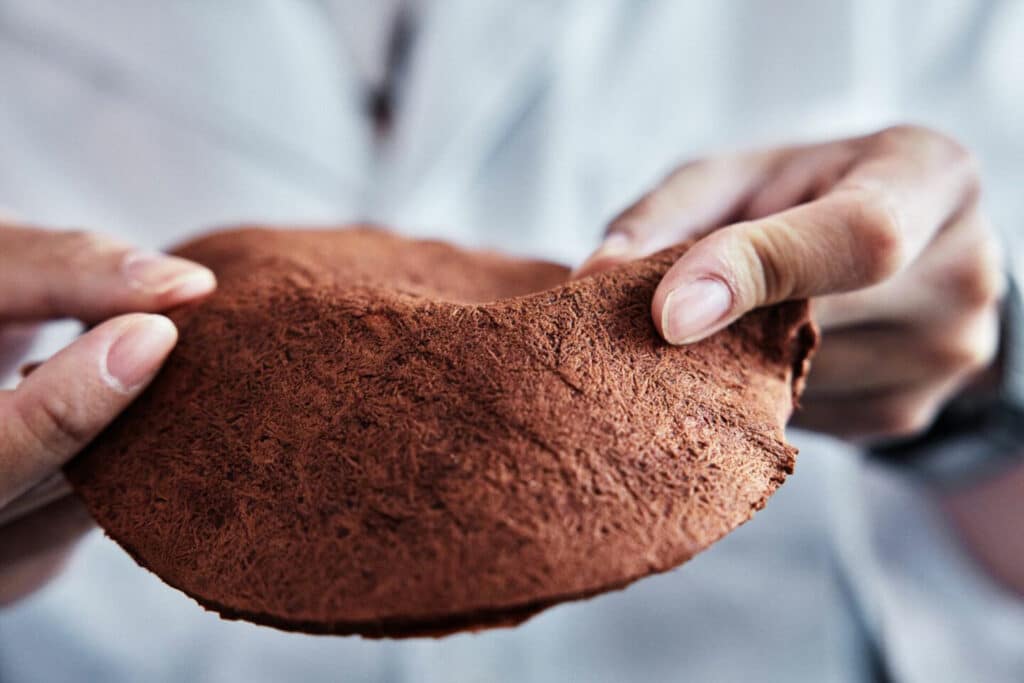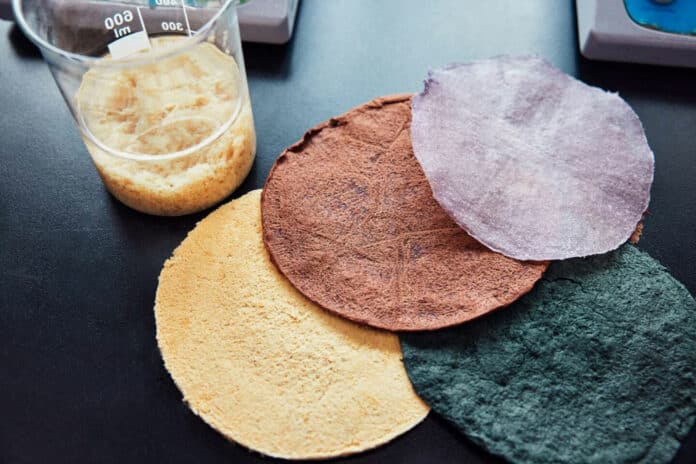Leather production generates wastewater and harmful chemical residuals, such as chromium VI, which results from the tanning process.
Now, the Hong Kong Research Institute of Textiles and Apparel (HKRITA) is collaborating with H&M Foundation in the programme Planet First to find technologies that can contribute to a planet-positive fashion future.
One of their research projects is the reProLeather project, a breakthrough innovation in the field of leather recycling. The reProLeather project aims to create a circular economy for leather, where waste is turned into value-added products.
Traditional recycled leather is produced by combining shredded scraps and residual fibers of real leather with synthetic, non-biodegradable binders like polyurethane (PU) and polyvinyl chloride (PVC).
In contrast, the reProLeather project utilizes bio-based binders and eco-friendly chemicals to transform leather waste into a new form of recycled leather that is chromium-free, biodegradable, and recyclable.

Through the Planet First program, the HKRITA researchers have developed a way to separate the chromium VI from the shredded leather fibers and create a bio-based alternative to the PU and PVC binders, thereby creating a new leather-like material.
The conversion process is carried out in two steps. Firstly, a whole post-consumer leather product is shredded into small pieces to obtain high-purity leather fibers. Secondly, free chromium is removed by transforming it into a soluble salt or complex compound.
The separated leather fibers are then treated with bio-based binders such as sugar or protein under mild conditions, which interconnect the collagen fibers and result in the formation of a new leather.
The regenerated leather obtained from this bio-based approach is both water-resistant and biodegradable, creating a virtuous cycle for leather recycling.
